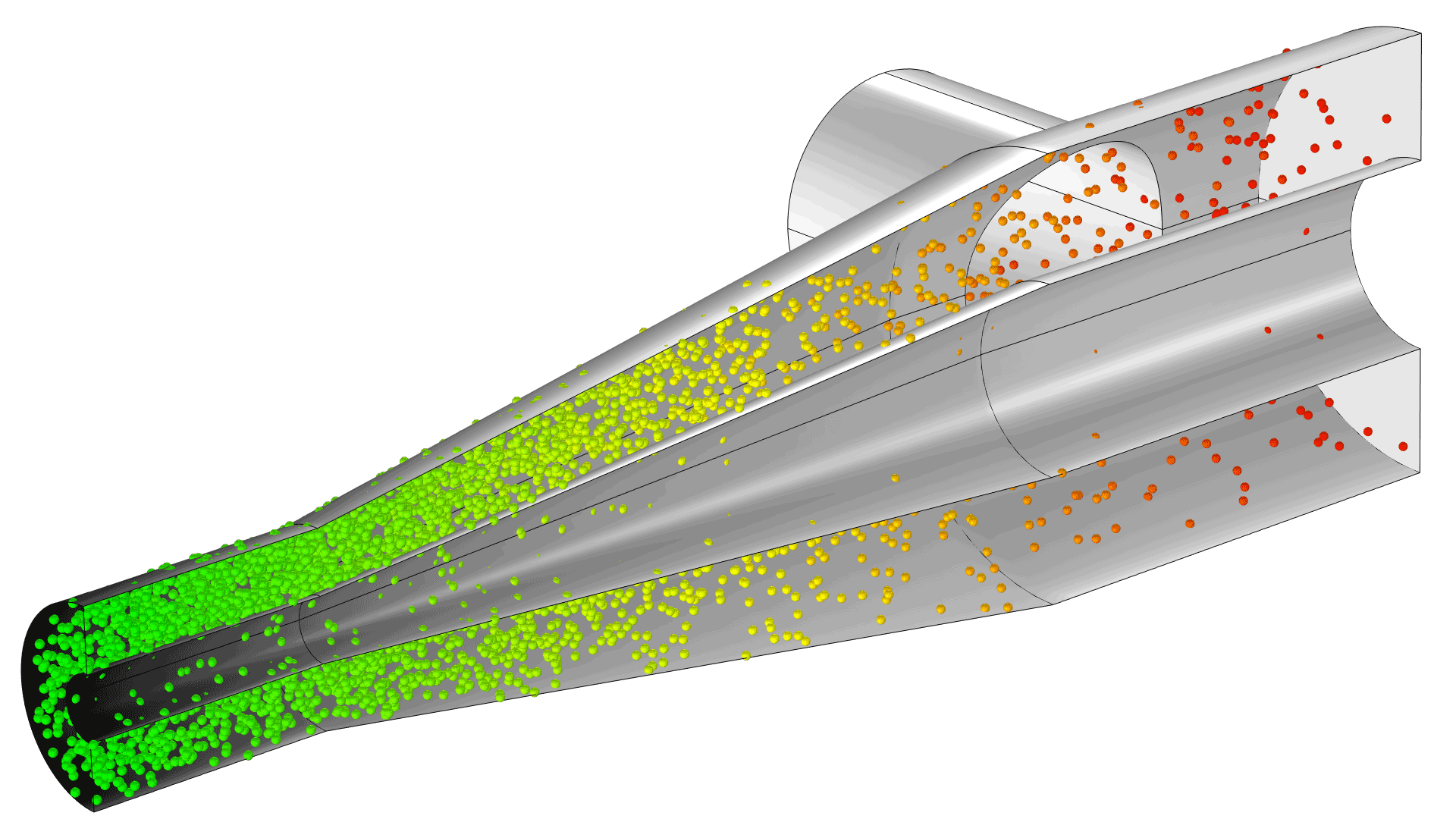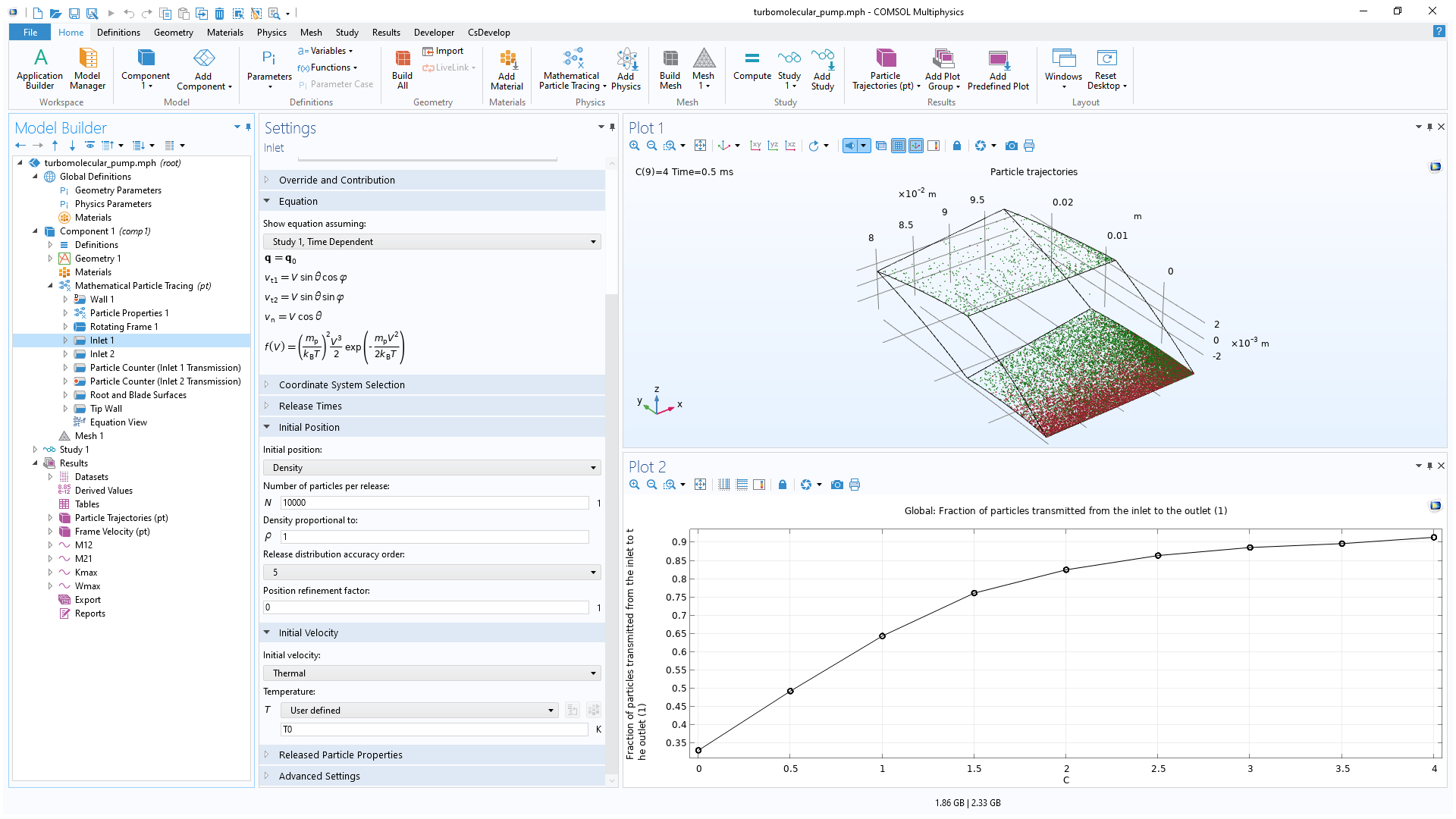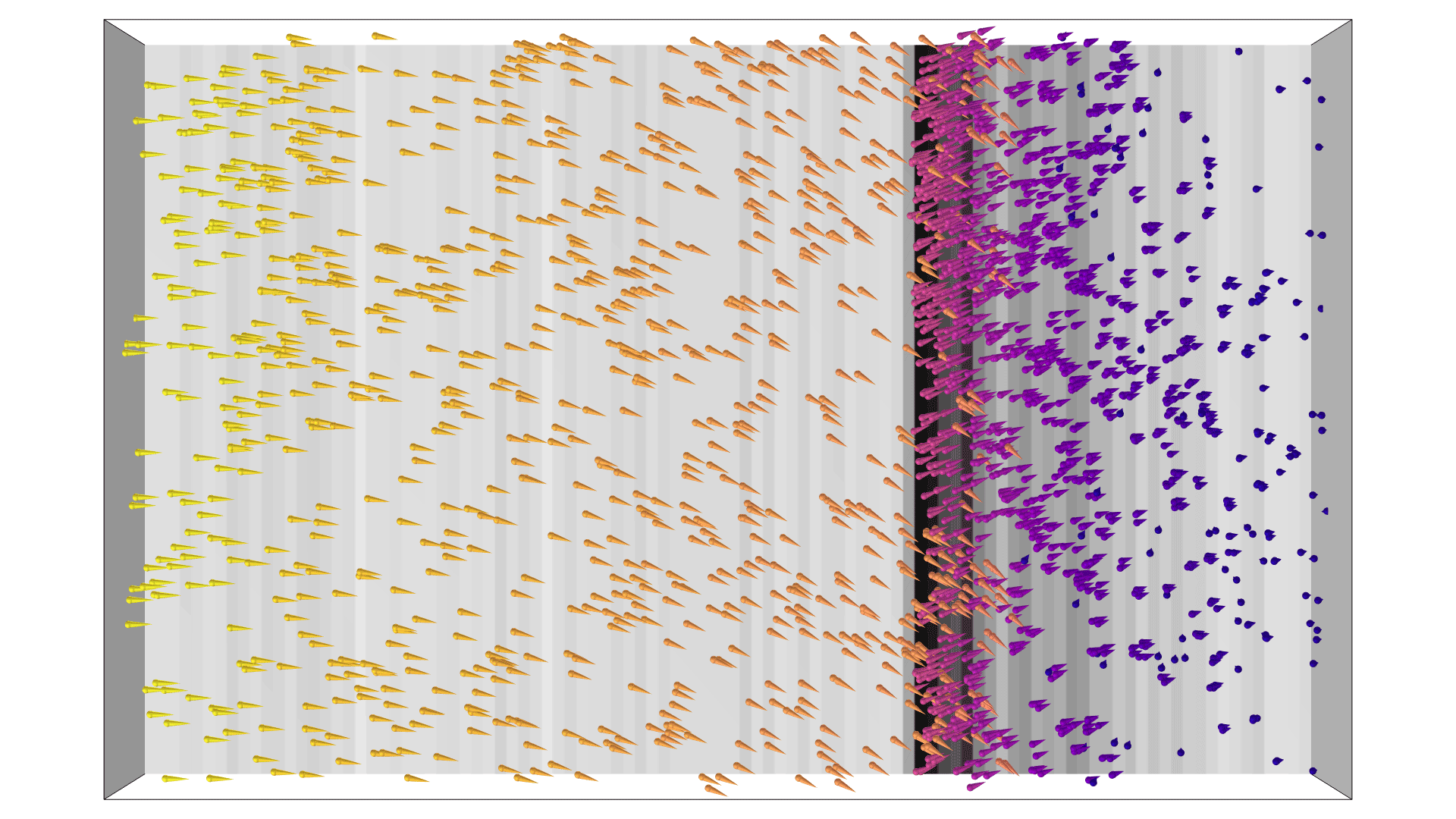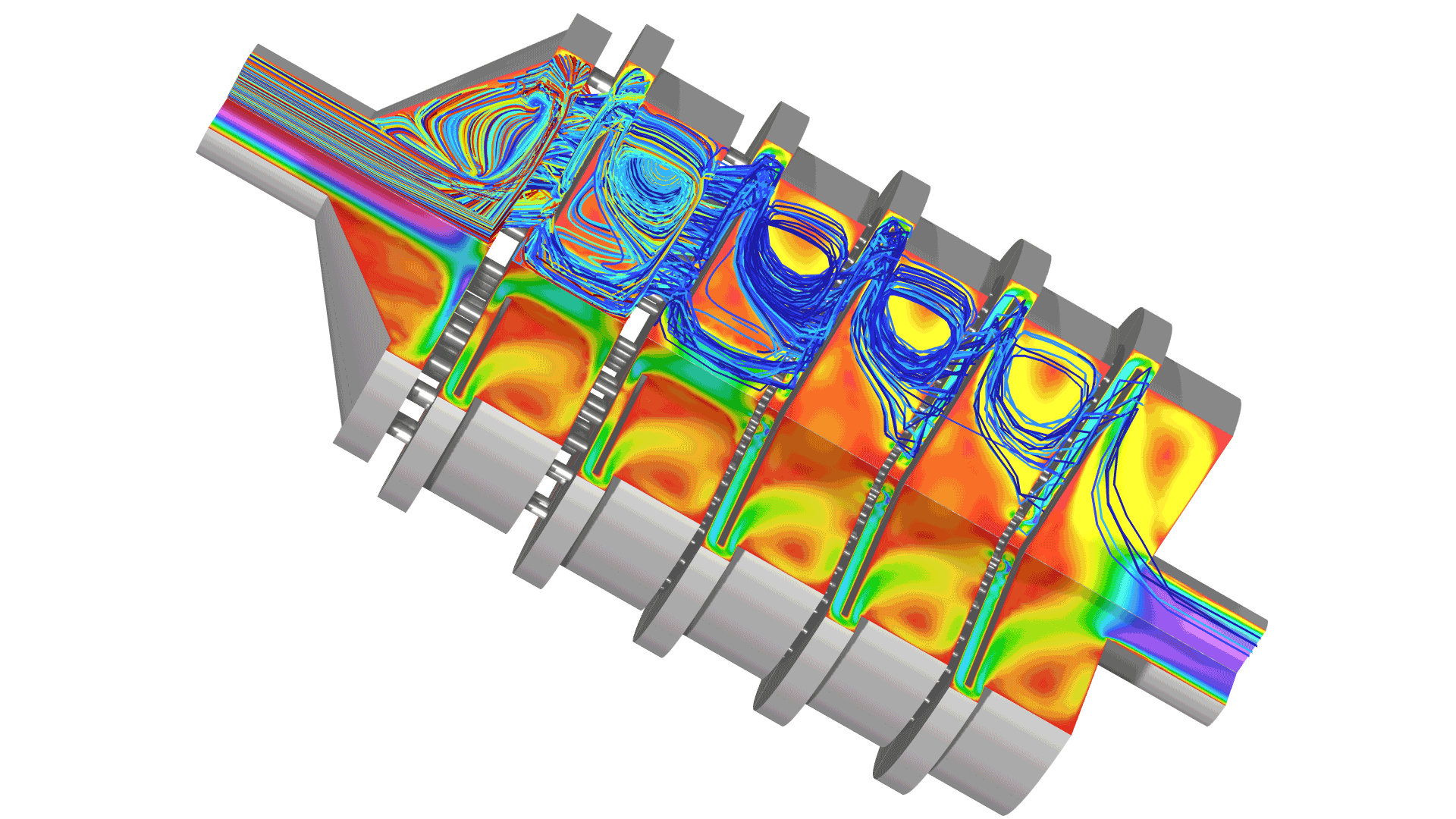support@comsol.com
Particle Tracing Module Updates
For users of the Particle Tracing Module, COMSOL Multiphysics® version 6.1 provides improvements for pseudorandom number generation and sampling from thermal velocity distribution as well as two new tutorial models. Learn more about these updates below.
Improved Pseudorandom Number Generation
The Particle Tracing Module includes a variety of features and functionality that rely on pseudorandom number generation (PRNG), such as:
- Monte Carlo modeling of collisions between model particles and molecules of a background gas
- Brownian motion of small particles in a fluid
- Motion of particles in a turbulent fluid
- Boundary conditions that cause particles to be diffusely or isotropically reflected
- Secondary particle emission at a specified probability
- Conditional particle–wall interactions
The pseudorandom number generation methods used in these examples have been improved and are less likely to incur correlations between random numbers that should ideally be uncorrelated. This includes preventing unwanted correlations between random forces acting on different particles, different components of certain random forces, and different physics features or different instances of the same feature. You can see some of these improvements in the new Multipactor Saturation model as well as in the following existing models:
- ion_drift_velocity_benchmark
- ion_funnel
- ion_range_benchmark
- planar_diode
- flow_channel_turbulent_dispersion
- pipe_elbow_erosion
- brownian_motion
- turbomolecular_pump
- turbomolecular\ pump_quasi_2d
- s_-_bend_benchmark (requires the Molecular Flow Module)
- rf_coupler (requires the Molecular Flow Module)
- charge_exchange_cell (requires the Molecular Flow Module)

Improved Sampling from Thermal Velocity Distributions
When releasing or reflecting particles at a surface, the Particle Tracing Module includes several features that sample the particle speed from a distribution based on temperature. This includes the Thermionic Emission particle release feature in the Charged Particle Tracing interface, the Thermal velocity distribution type for the Inlet node, and the Thermal Reemission boundary condition. The way in which these features are able to sample the values of the particle speed from thermal distributions is now more accurate. This improvement is evident when computing statistics for particles at the low and high ends of the distribution when the sample size is large.
In addition, a new Thermal velocity distribution type is available for the Secondary Emission attribute of the Wall and Axial Symmetry features. This can be used so secondary particles can be sampled from thermal velocity distribution when active particles hit a wall. View these updates in the new Multipactor Saturation model and the following existing models:
- planar_diode
- turbomolecular_pump
- turbomolecular\ pump_quasi_2d
- s_-_bend_benchmark (requires the Molecular Flow Module)
- rf_coupler (requires the Molecular Flow Module)

New Tutorial Models
COMSOL Multiphysics® version 6.1 brings two new tutorial models to the Particle Tracing Module.
Multipactor Saturation

Application Library Title:
multipactor_saturation
Download from the Application Gallery
Cascade Impactor

Application Library Title:
cascade_impactor
Download from the Application Gallery
